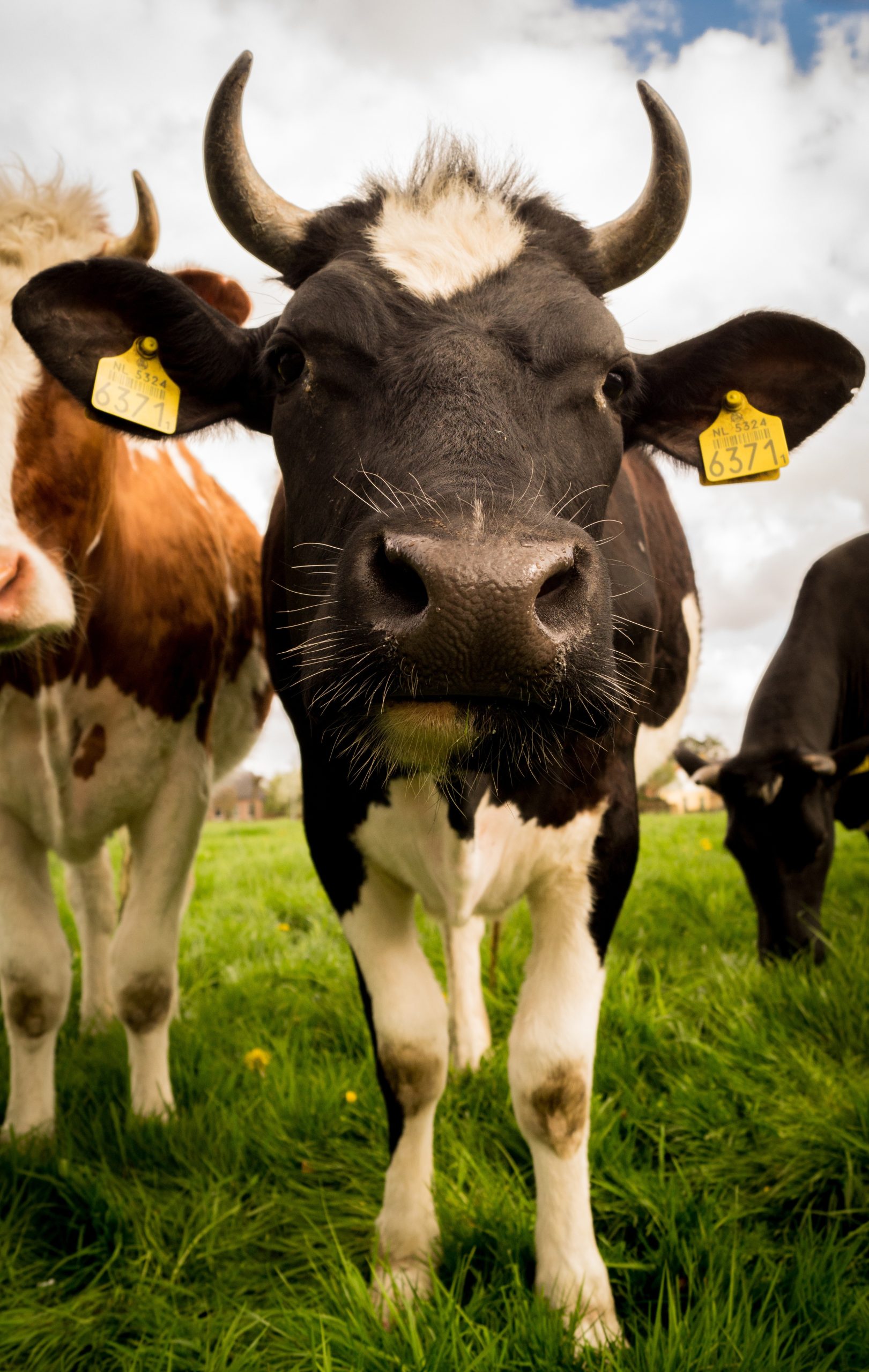At a time when the cattle herd is at historic lows due to the soaring costs of inputs and drought, beef-on-dairy cattle—cattle from dairy animals inseminated by semen from beef cattle—have been a boon to both dairy farmers and beef processors.
They provide a welcome extra income stream for dairy owners and operators, and the meat of beef on dairy heifers and steers is accepted and welcomed by consumers. By one estimate, beef on dairy breeds provide up to 23% of the nation’s beef supply for human consumption. Above, a photo from Skitter photo Pixabay.
But one drawback concerns beef processors especially. It’s the prevalence of liver abscesses in beef on dairy cattle. While there are no firm estimates yet, articles in specialized dairy and beef publications report the industry consensus that liver abscesses are two to three times more prevalent in BoD cattle than conventional beef cattle. No one knowns why, or whether that perception is correct.
Liver abscesses are not a new problem. They have been detected in beef cattle going back to the 1930s. Conventional wisdom in beef publications associates them with feedlot diets too rich in starch and lacking in fiber. Such diets are believed to cause acidosis in cattle rumens, leading to conditions that promote bacterial overgrowths and invasion into the ruminal wall, and subsequent entry into the blood flow from the gut to reach the liver.
Liver abscesses can be costly for three reasons. One is that abscessed livers, detected in the processing line, are means those animals and carcasses are taken out and do not go into human food supply. Secondly, if the liver is severely abscessed, which is scored as A+ (3 on a scale of 0 to 3) in the packing plant, there is significant reduction in live animal performance (weight gain and feed to gain efficiency) and reduction in carcass yield and value.
In severely abscessed livers, the infection can involve neighboring organs, including the diaphragm and skirt steaks, the second-most expensive and desired cut after the tenderloin.
Losses can run up to $60 per carcass. The adhesion to adjacent tissues and organs requires careful inspection by hand and extensive trimming of carcasses. The slowdowns can be expensive, especially in large processors and packing plants. The total annual loss of income from loss of abscessed livers has been estimated at $60 million.
Grants helping
The issue concerns the beef industry enough that industry groups have funded studies to get scientific answers. At least four top researchers have received Foundation for Food and Agriculture grants to study the issue from different angles. The grants were matched by various industry donors, including Syracuse Dairy, Animal Welfare Consulting & Research, Deer Creek Feeding Inc., Tyson Foods, Vet Research and Consulting Services, Hy-Plains Feedlots, United Animal Health Inc. and Cargill. While the research is promising and is making progress, it has not yet produced any silver bullet.
Dale Woerner, Cargill endowed professor in the Department of Animal and Food Sciences, Texas Tech University, received a $300,000 grant (matched to $633,462). Dr. T.G. Nagaraja, university distinguished professor of microbiology at Kansas State University, is coordinating his research with Woerner’s. Nagaraja received a $248, 641 grant (matched to $497, 282) to evaluate biochemical fingerprinting in blood plasma collected from beef cattle with and without liver abscesses.
Progress being made
Nagaraja told High Plains Journal thathis group is making progress. Three bacterial species found in abscesses are Fusobacterium necrophorum, Trueperella pyogenes and Salmonella enterica. The first bacterium, Fusobacterium, is a strong candidate for being the primary causative agent, according to Nagaraja. One surprising finding was that E. coli was present in almost 100% of liver abscesses examined in a sample population, according to a recent study that was the first to look for E. coli.
Kendall Samuelson, associate professor of animal science at West Texas University, was awarded a $300,000 grant (matched to $600,340) to study abscess development in feedlot cattle and evaluate how management practices used, in conventional beef versus dairy systems influence liver abscess prevalence.
Dr. Raghavendra Amachawadi, associate professor of food animal therapeutics at K-State, received a $300,000 grant (matched to $600,000) to study possible connections between feeding and management practices and liver abscesses.
None of the researchers has published results as of yet. “We still don’t fully understand the mode of action surrounding liver abscess development,” Samuelson said. “The first step is being able to reliably generate conditions that allow us to study the problem so we can understand the pathogenesis and evaluate mitigation strategies.”
Other factors
Samuelson said that while diet does appear to be a factor, it’s not the entire story. Liver abscesses have been found in completely grass-fed cattle as well as in feedlot-finished cattle, although their prevalence is lower. She said that according to data recorded by the meat science group at WTAMU, the prevalence of liver abscesses does seem to be higher in BoD cattle than either beef or dairy cattle. “Pathogen load could be a factor as well,” she said. “It is important area for further research.”
The goal is to combat liver abscesses without antibiotics, Nagaraja said. Liver abscesses are now the most common reason for using tylosin—an antibiotic very similar to the erythromycin that humans use — in feedlot cattle. “There is growing to reduce the use of antibiotics in feed,” he said. “If we can develop an effective vaccine or antibiotic alternatives, such as probiotics that targets the fusobacterium in the rumen, we will be able to replace tylosin
Nagaraja said makers of probiotic products have approached his team to see if any of them can reduce fusobacterium in vitro, but so far none have.
David Murray can be reached at [email protected].


